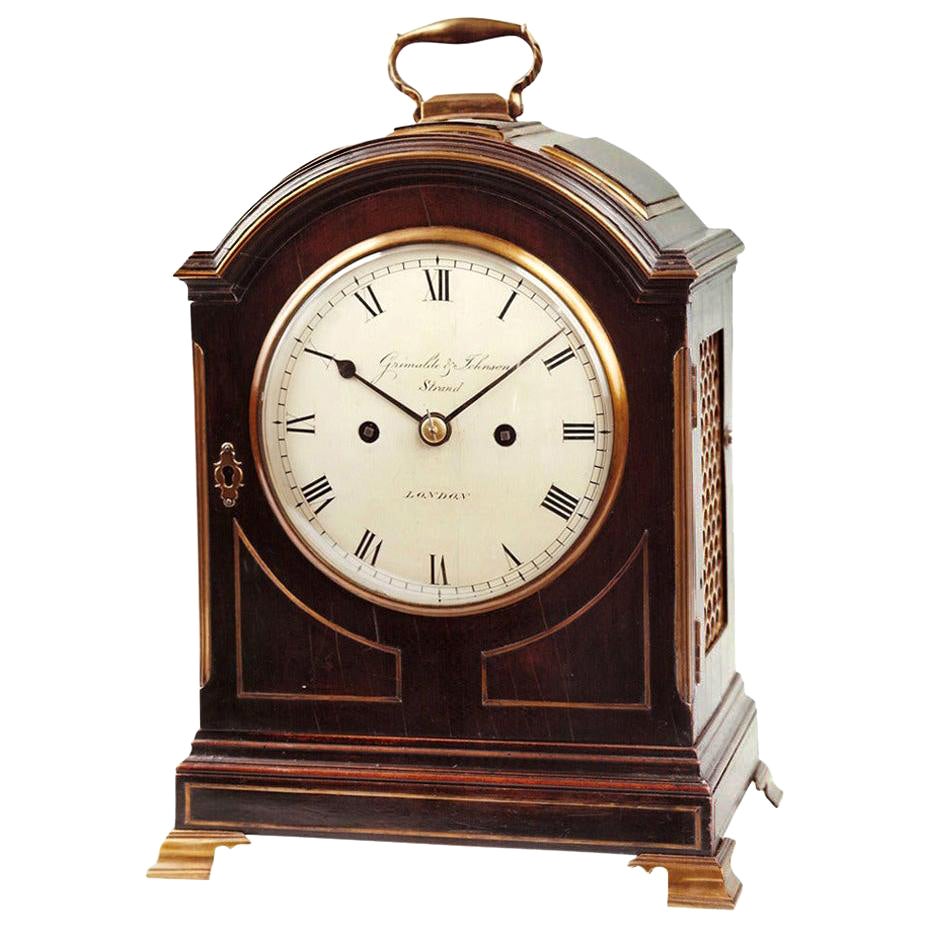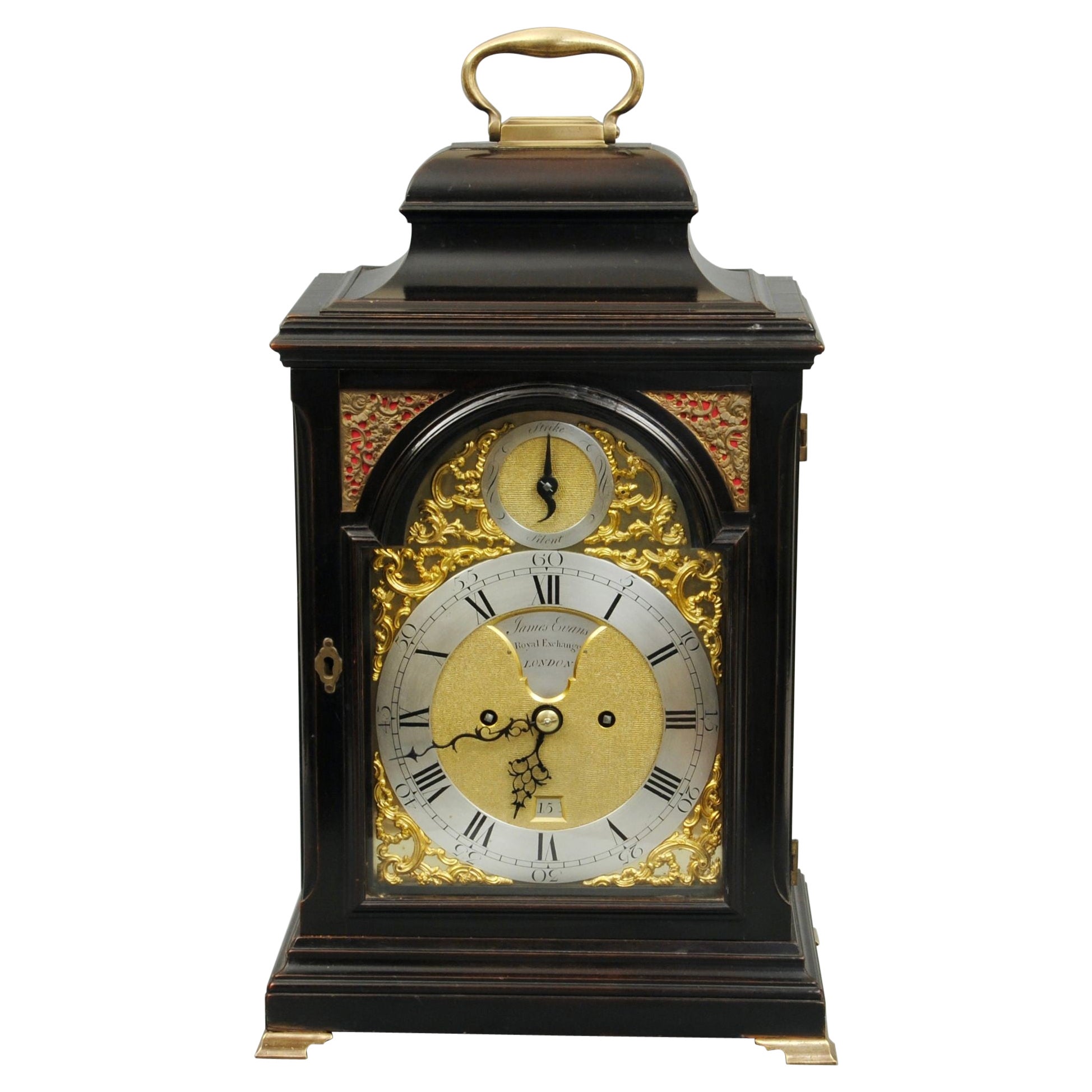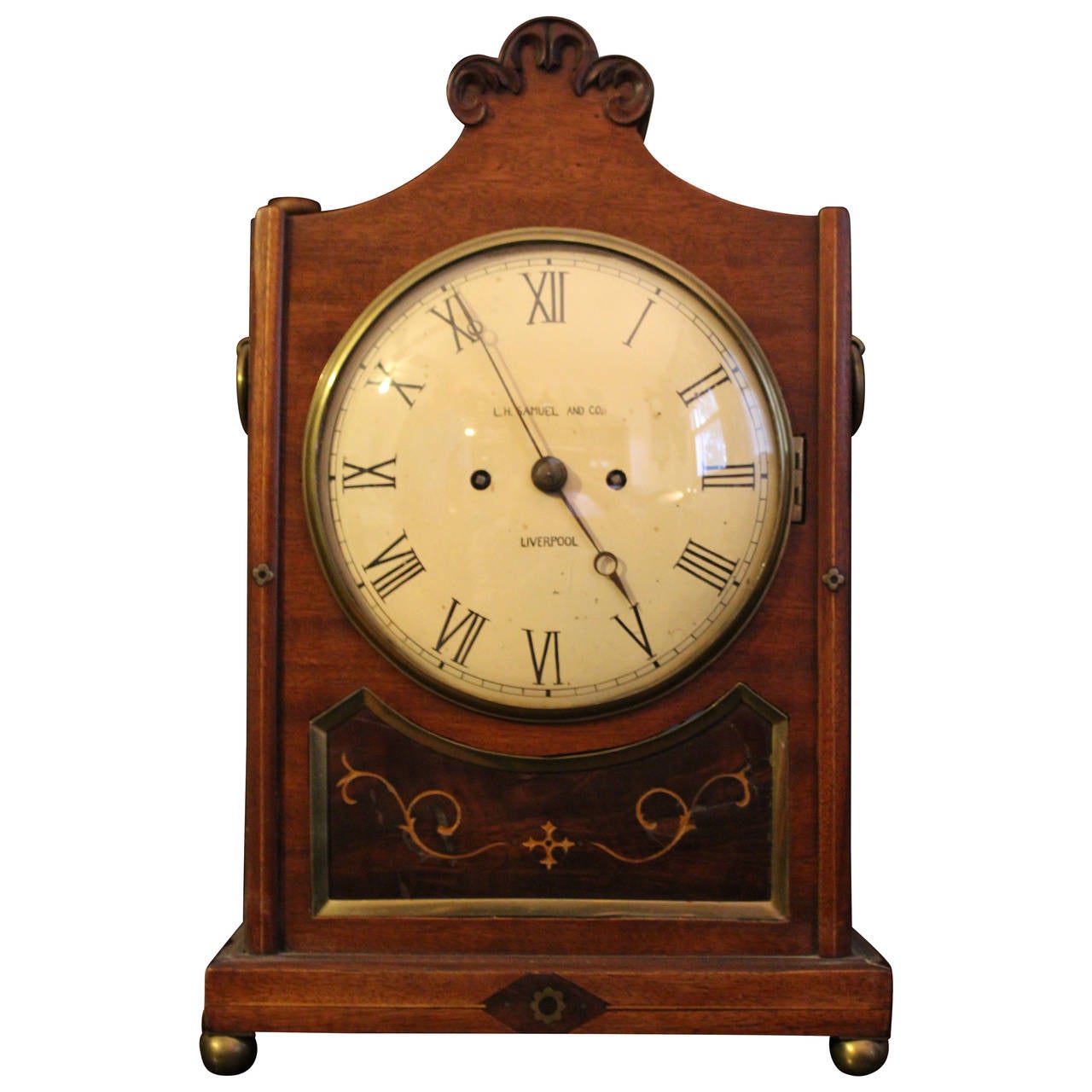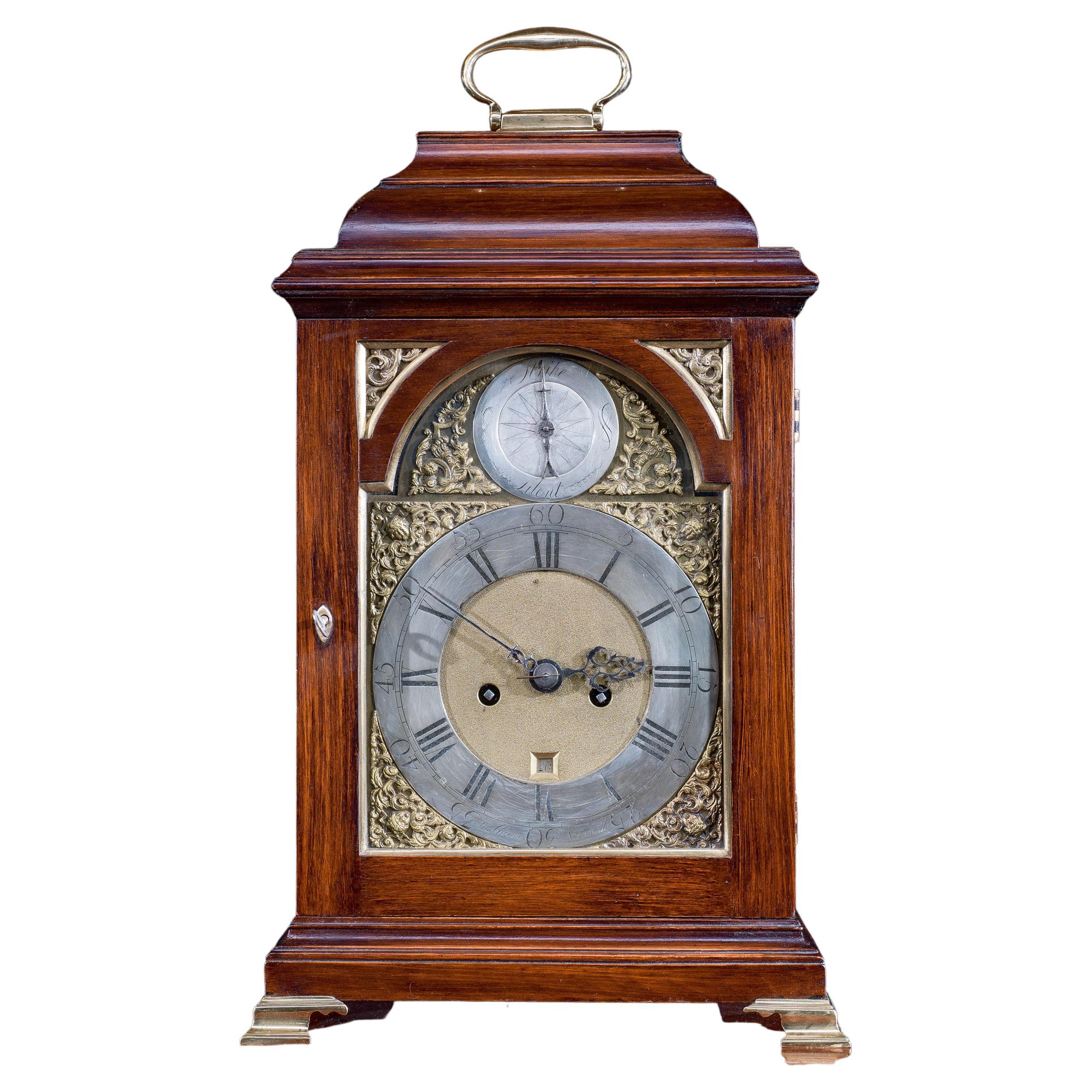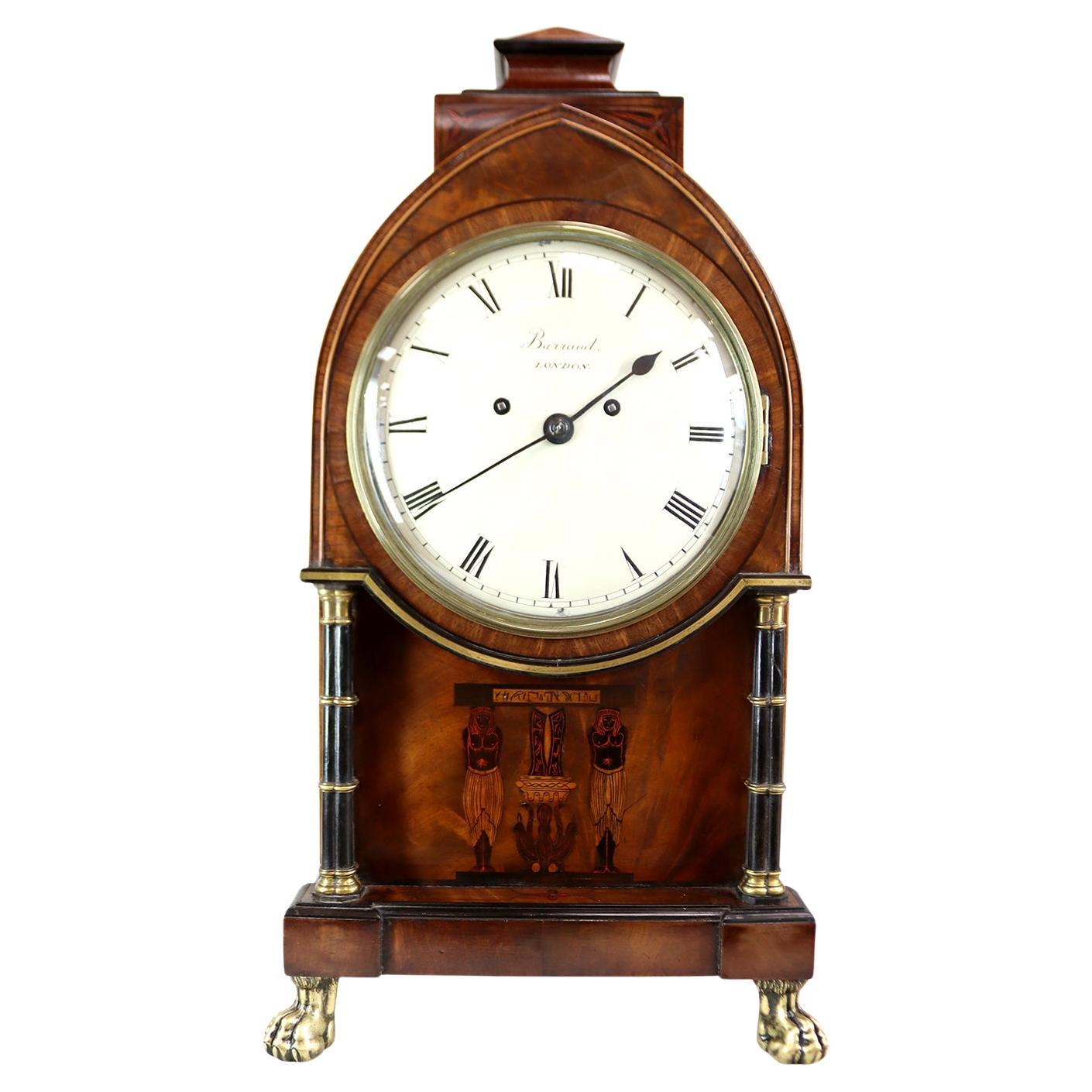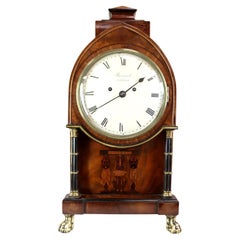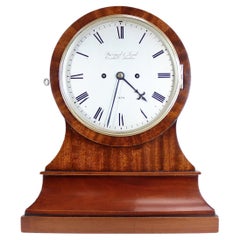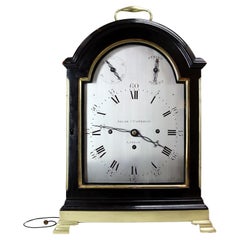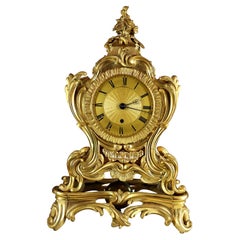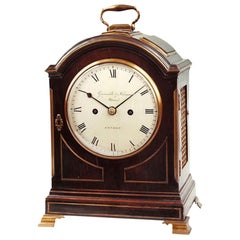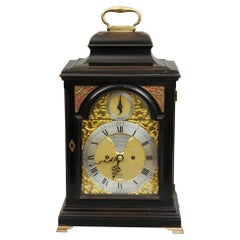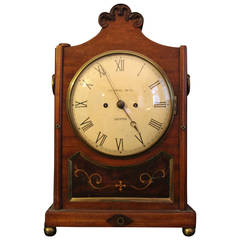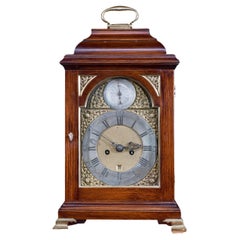Items Similar to John Leroux, London. Twin Fusee Balloon Clock
Want more images or videos?
Request additional images or videos from the seller
1 of 13
John Leroux, London. Twin Fusee Balloon Clock
$18,047.25
£13,465
€15,579.04
CA$25,263.32
A$27,838.15
CHF 14,439.19
MX$331,097.37
NOK 182,651.61
SEK 171,105.83
DKK 116,351.99
About the Item
An 18th century balloon shaped bracket or table clock by John Leroux of Charing Cross, dating from circa 1790. The waisted case surmounted by a brass pineapple finial over a drum housing the movement. The dial is behind a hinged convex glazed cast brass bezel to front and brass carrying handles to sides, over hipped concave-sided section forming the base. The front has an applied mount of a sunburst mask, the rear with keyhole shaped door incorporating fine scroll-pierced sound fret set within the frame of the case, on generous cavetto moulded skirt base incorporating break-arch recess to apron and with ogee bracket feet.
The five knopped pillar twin fusee bell striking movement with rounded angles to the rectangular plates and anchor escapement regulated by a long bob pendulum with an effective length of approximately 11.5 inches, the backplate signed J. Leroux, London to centre, the 7 inch circular single sheet silvered brass Roman numeral dial signed Leroux, Charing Cross to centre, with fine pierced steel hands and Arabic five minutes to outer track.
An identical clock is illustrated in English Bracket and Mantel Clocks by Andrew Nicholls, 1981 p108 fig 46.
John Leroux is recorded in Baillie, G.H. Watchmakers & Clockmakers of the World as an 'eminent maker' who worked from Charing Cross 1781-1808. He was particularly well known as being one of the first makers to incorporate the lever escapement within his watches and was succeeded by James Rigby. A similar clock by Leroux, is illustrated in Barder, Richard C.R. The Georgian Bracket Clock 1714-1830 page 147 (plate IV/95).
Leroux is also mentioned in English Domestic Clocks By Herbert Cescinsky and Malcolm Webster Illustration 357 p314 showing another balloon clock of the same form.
Examples of Leroux’s work can be found in the collections of the British Museum, The Science Museum, John Soanes Museum and the Welcome Collection.
Previously the property of Deutsche Bank; This clock was retailed by Percy Webster, there is one of his distinctive engraved plaques inside the case. Percy Webster, was a notable antiques dealer and clockmaker who operated during the late Nineteenth and early Twentieth Centuries and is considered by some to be the first notable authority on antiquarian clocks and later took up the position of Master of the Worshipful Company of Clockmakers. His son, who followed his Father into business was equally respected and was responsible alongside Herbert Cescinsky for producing the book that became, and to some extend still is, the clock collector’s bible, “English Domestic Clocks”. We have included and image of Webster’s showroom, that tantalisingly has a balloon clock of the same form visible, proving that this superb clock was of considered to be of the highest quality by Webster.
This clock comes with our 2 year guarantee.
- Creator:John Leroux (Clockmaker)
- Dimensions:Height: 13.78 in (35 cm)Width: 11.23 in (28.5 cm)Depth: 7.29 in (18.5 cm)
- Style:George III (Of the Period)
- Materials and Techniques:
- Place of Origin:
- Period:
- Date of Manufacture:1790
- Condition:
- Seller Location:Amersham, GB
- Reference Number:Seller: 1571stDibs: LU9135236384322
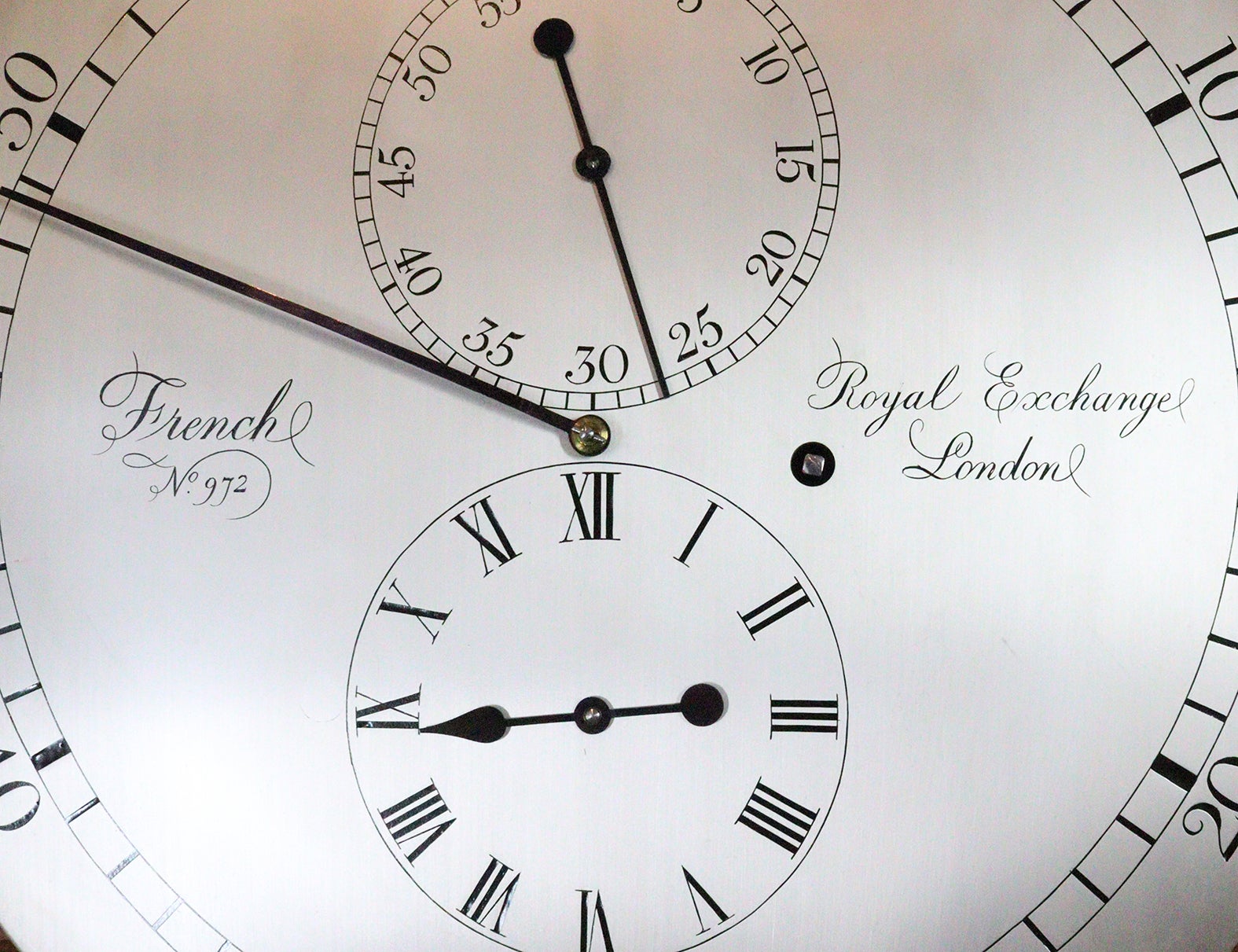
About the Seller
No Reviews Yet
Vetted Professional Seller
Every seller passes strict standards for authenticity and reliability
Established in 2021
1stDibs seller since 2023
7 sales on 1stDibs
Typical response time: 1 hour
- ShippingRetrieving quote...Shipping from: Amersham, United Kingdom
- Return Policy
More From This Seller
View AllA Paul Philip Barraud Bracket Clock in the manner of Thomas Hope
Located in Amersham, GB
A very striking twin fusee bracket clock in an Egyptian revival style case by Paul Philip Barraud. The eight day movement with unusual round plates of thick brass engraved on the bac...
Category
Antique Early 1800s English Egyptian Revival Mantel Clocks
Materials
Brass, Steel
Twin Fusee Bracket Clock By Barraud And Lund
Located in Amersham, GB
A striking drum head bracket clock by Barraud and Lund of exceptional quality. The case is made of quarter sawn mahogany with a beautifully crisp silv...
Category
Antique Mid-19th Century English Victorian Mantel Clocks
Materials
Brass
A Rare George III Ten Bell Quarter Chiming Bracket Clock By Allam and Caithness
Located in Amersham, GB
A rare example of a quarter chiming bracket clock made 1800-1805 by John Allam and Thomas Caithness with an eight day triple fusee movement chiming on ten bells. This clock has an un...
Category
Antique Early 1800s English George III Mantel Clocks
Materials
Brass, Steel
Single Fusee Mantel clock by Hay London
By HAY
Located in Amersham, GB
An unusual english single fusee mantel clock in a Louis XV style rocaille ormolu case in the french taste. The eight day fusee movement is of superb quality with a pendulum descendin...
Category
Antique Early 19th Century British Rococo Mantel Clocks
Materials
Bronze
A Very Fine Regency Library Clock
Located in Amersham, GB
This eight day single fusee library timepiece is of unusually small proportions, the a four pilars holding the two thick brass plates. The movement with anchor escapement has an adju...
Category
Antique 1830s English Regency Table Clocks and Desk Clocks
Materials
Brass, Steel
A Diminutive Bracket Clock by Adams of Lombard Street
By Adams
Located in Amersham, GB
A rosewood and ormolu mounted bracket clock. With an eight day twin fusee movement, signed Adams of Lombard Street on the 5 inch silvered dial and movement back plate. Striking on a ...
Category
Antique Mid-19th Century English William IV Mantel Clocks
Materials
Brass, Ormolu
You May Also Like
Early 19th Century Antique Bracket Clock by Grimalde & Johnson of London
By Grimaldi & Johnson
Located in Devon, GB
An antique late George III period ebonized bracket clock by Grimalde and Johnson, strand. This attractive clock of small proportions, has a mou...
Category
Antique 19th Century British Regency Mantel Clocks
Materials
Wood
18th Century Bell Top Bracket Clock by James Evans
Located in Lincolnshire, GB
An elegant 18th century 8 day verge bracket clock in ebonised case by James Evans London.
The back plate beautifully engraved.
The movement has ...
Category
Antique Late 18th Century English Mantel Clocks
Materials
Wood
English Bracket Clock, 19th Century William lV Period
Located in Hamilton, Ontario
19th century William lV period English bracket clock.
William IV mahogany bracket clock, L. H. Samuel and Co., Liverpool, circa 1830.
8 inch painted dial ...
Category
Antique 19th Century Great Britain (UK) William IV Mantel Clocks
Fine Georgian Eight Day Bracket Clock
Located in London, GB
A fine Georgian walnut bracket clock by John Greaves of Newcastle (born c.1725 and active between 1745-94) with an eight day five pillar twin train fusee movement and anchor escapeme...
Category
Antique Mid-18th Century English George III Mantel Clocks
Materials
Walnut
English Bracket Clock, George III Period, 18th Century
Located in Hamilton, Ontario
18th century English bracket clock, George III period.
John Grant of fleet street, London, circa 1790. George III period ebonized...
Category
Antique Late 18th Century Great Britain (UK) George III Wall Clocks
$12,795 Sale Price
20% Off
George III Bracket Clock by Christopher Bullock, London
Located in Norwich, GB
George III bracket clock by Christopher Bullock, London
Finely figured mahogany bell top case with four ‘pineapple’ finials surmounted by a h...
Category
Antique 1760s English Table Clocks and Desk Clocks
Materials
Mahogany
More Ways To Browse
Antique Brass Sheets
Balloon Table
Antique Brass Drum
Fusee Clock
Antique English Mantel Clock
London Brass Clocks
Antique Fusee Clock Clocks
English Bible
Antique English Bible
18th Century Bracket Clock
Georgian Bracket Clock
18th Century English Bracket Clock
George Iii Long Case Clock
Balloon Clock
Antique Bank Clock
Balloon Mantel Clock
Webster Clock
Antique Art Deco Mantel Clock
